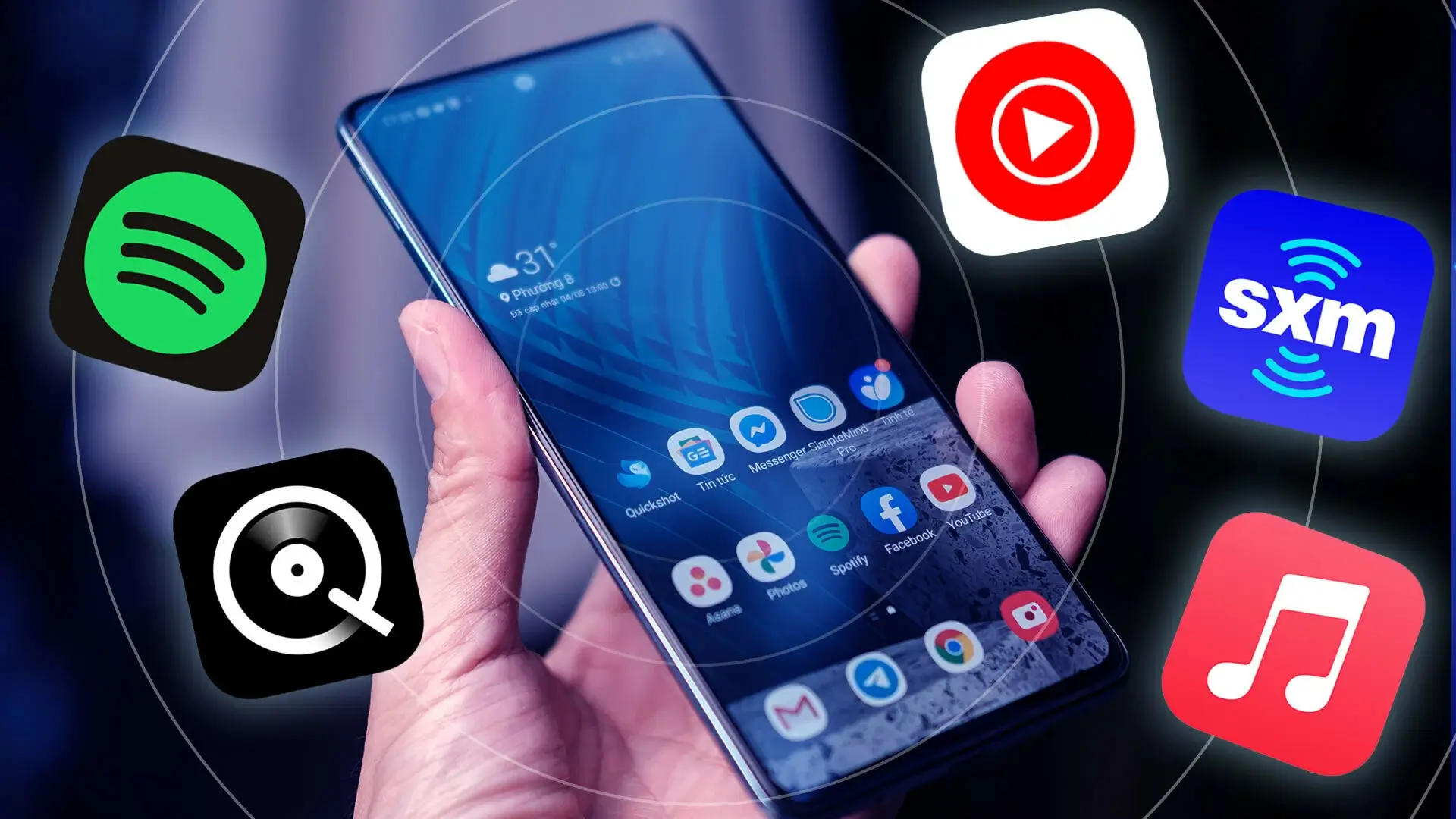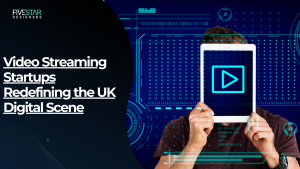Audio streaming technologies have become ever more common since they enable individuals’ immediate access to a sizable library of tracks in the present technological age. Increased awareness of the monetary implications is crucial in determining the costs of building a music streaming application.
The costs of building a music streaming application may vary depending on several elements, like the complexity of the software, its features, platform support, and licensing needs. In this article, we’ll examine the various elements that go into the total expense, giving you an understanding of the cost requirements of building a music streaming application.
If you’re a developer who is determined to know how much it costs to build a music streaming app, let’s get started!
Suggested Read: How To Create An OTT App? Development Guide 2023
Planning and Design Costs
Developing a music streaming application requires planning and design. Planning and design are essential steps in creating an appealing product. It involves establishing the application’s features and functionality and conducting in-depth market investigation and user behavior analysis.
Given the application development project’s size and complexity, planning and design expenses might vary from $3,000 to $224,000 or more. A sound development foundation is ensured by participating in a well-executed planning and design procedure, creating the ideal conditions for an intuitive user experience.
Development Costs
The music streaming application takes shape during development, significantly impacting the cost. Developing the application’s front and back end and incorporating functionality like audio streaming, identification of users, music catalog management, and social networking are all part of the development phase.
The intricate nature of the application, the intended platforms, and the technology stack are just a few examples of the variables that affect development costs. The typical cost of developing an app might be between $20,000 and $100,000.
The specifications of the application, the hourly rates of the development team, and the length of time needed to execute the project all have an impact on the cost. These are some things to consider when evaluating the costs to build a music streaming app.
Back-End Costs
Developing a music streaming application requires back-end development, which has its costs. The server-side infrastructure must be built during this phase, along with APIs for effortless information transfer.
The key task involved is designing a solid database structure to manage the application’s music catalogs, individual profiles, and other pertinent data. The cost will depend on the backend architectural complexity and scalability demands.
A music streaming application’s backend development may cost anywhere from $25,000 to $60,000 or more. The application’s capabilities, the degree of modification necessary, and the hourly rates of the programming team working on the project all impact pricing.
Copyrights and Licensing Costs
A crucial component is obtaining your music streaming application’s required licenses. It has separate financial implications, and you must secure licenses from record companies and publishers to lawfully stream songs.
Given elements like the scope of your music library, the notoriety of the musicians, and the tracks featured, the licensing costs might vary considerably. Licensing costs can be expensive and frequently involve one-time fees or continuing royalties based on usage.
The price of extra content, such as premium downloads, carefully crafted collections, or podcasts, may also affect your spending plan. Considering your music streaming service’s cost and long-term viability, these expenses should be considered.
External Services
Developing a music streaming application necessitates incorporating external services, which impacts cost. These services offer fundamental features and infrastructure that improve the application’s functionality. Fully understanding third-party service integration is essential to know how much it costs to build a music streaming app.
Several variables, including usage size, API access costs, and tiered pricing structures, can affect how much third-party services cost. Investigating and assessing the various service providers’ pricing policies is crucial. Finding the most affordable choices that fit your app’s needs and spending limit is helpful.
Music Catalogue Management
Developing a music streaming platform requires effective music catalog management, which also has pricing implications. This also affects the overall cost of developing a music-streaming app. This stage entails managing, classifying, and organizing the platform’s enormous song catalog.
The music collection’s size, the metadata’s difficulty, and the incorporation of other music information sources all influence the cost. The degree of modification necessary for the classification and recommendation algorithms also affects pricing.
Spending money on efficient music catalog management will improve the user interface and speed up content search. However, it adds to the cost of building a music streaming app but is worth it.
User Authorization Expenses
An uninterrupted experience, user authentication, and encryption are essential components of a music streaming service. Incorporating robust user authentication methods like social networking site login and two-factor authentication is part of this.
Depending on several variables, user authentication and security costs can change. It entails compliance with privacy laws, incorporating third-party authentication offerings, and the intricate nature of the authentication system.
Quality Assurance Costs
Quality assessment is an essential step during development. It guarantees a music streaming application’s functionality, reliability, and user pleasure. This step is necessary to find and address any problems or difficulties. It entails thorough testing of the app across a range of gadgets, operating systems, and screen sizes.
The intricate nature of the software and the range of compatible platforms can affect the expense of quality assurance. Given the level of testing necessary, the price often ranges from $5,000 to $15,000 or more.
It is imperative to invest in thorough testing to create dependable music streaming software. Quality assurance is the backbone of any application development process.
Maintenance and Deployment Costs
The procedure of applying to app stores for application deployment falls within the deployment and maintenance stage of developing an application. The regularity of updates and the strength of the programming team can affect how much deployment and maintenance will cost. The average annual maintenance cost percentage is 22% to 34% of the development cost.
Budgeting for continuing maintenance is crucial to keep the application safe and provide users with an effortless experience. Maintenance is essential for those who want to know how much it costs to build a music streaming app.
In A Nutshell
The cost of building a music streaming application depends on several factors. Each phase has financial requirements, from conception to development, licensing, and maintenance. As covered in this article, various factors affect how much does it cost to build a music streaming app.
It’s crucial to thoroughly consider every stage and set aside money for application streaming costs. Furthermore, the price strategies for the application should be carefully crafted, considering customer tastes and market research.
Set reasonable expectations by knowing the costs of developing music streaming software. It will support efficient resource allocation and the development of a profitable product in the ruthless music streaming market.
FAQ’s
The cost of building a music streaming app can vary depending on several factors.
Several factors affect the cost of building a music streaming app, including the app’s complexity, features, platform (iOS, Android, or both), design requirements, development team rates, and any additional integrations or third-party services.
Providing an exact cost without specific project details is challenging. However, a basic music streaming app can range from $50,000 to $100,000, while a more complex app with advanced features, social integration, personalized recommendations, and licensing may cost upwards of $200,000 or more.
Features such as user registration and login, audio streaming, playlist creation, search functionality, music recommendations, social sharing, offline listening, artist profiles, and licensing integration can influence the overall cost.
Yes, there are ongoing costs to consider. These may include server maintenance and hosting, content delivery network (CDN) costs for streaming large amounts of audio data, music licensing fees, regular updates and bug fixes, marketing and promotion expenses, and customer support.
Yes, the choice of platform can impact the cost. Developing a music streaming app for a single platform, either iOS or Android, is generally less expensive than building for both platforms simultaneously. However, costs can increase when supporting multiple platforms due to additional development and maintenance efforts.
Yes, if your music streaming app includes copyrighted music, you will likely need to obtain licenses from record labels or music publishers. These licensing fees can vary depending on the scope of your app and the agreements you establish.
Outsourcing development can be a cost-effective option, especially if you choose a development team from a region with lower hourly rates. However, it’s crucial to consider the team’s expertise, reputation, and communication capabilities to ensure a successful partnership.
App design plays a significant role in user experience and can affect development costs. A more complex and visually appealing design with custom graphics, animations, and user interactions may require additional design and development efforts, potentially increasing the overall cost.
Please note that these answers provide a general understanding of the factors and costs involved in building a music streaming app. The actual cost can vary depending on the specific requirements of your project and the expertise of the development team you choose.



